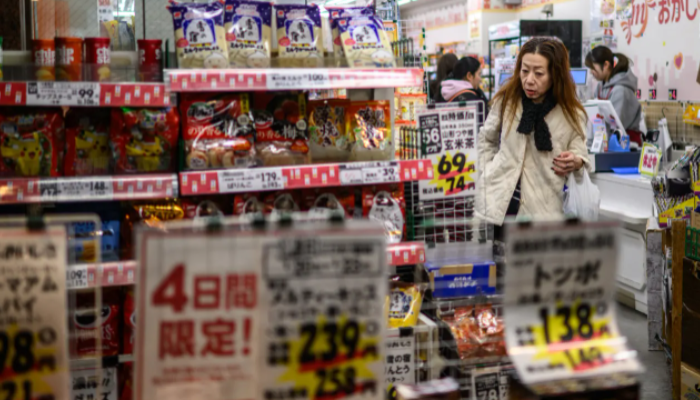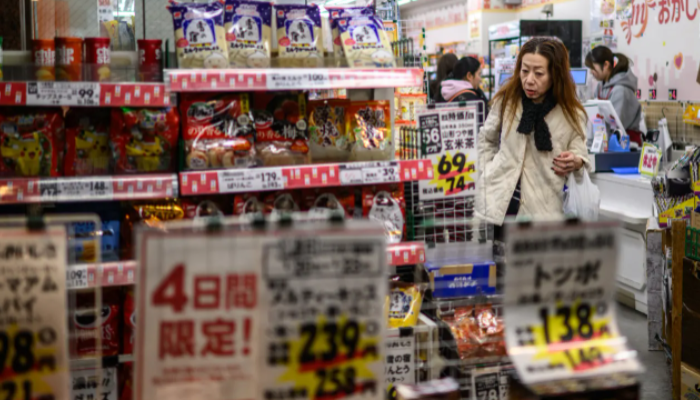
Japan’s Core Inflation Cools in June as Rice Prices Ease, but Broader Economic Pressures Persist
Japan’s core inflation eased to 3.3% in June, aligning with expectations and marking a retreat from May’s 29-month high of 3.7%, according to data released ahead of the country’s Upper House elections on July 20. The deceleration was driven in part by a moderation in rice price inflation, which had surged earlier in the year following poor harvests in 2023.
The HIR—which includes volatile items like fresh food and energy—also slipped to 3.3% in June, down from 3.5% in May, yet continued its 39th consecutive month above the Bank of Japan’s 2% inflation target.
Meanwhile, the “core-core” inflation measure, which strips out both fresh food and energy prices and is closely tracked by the BOJ as a more stable indicator of underlying inflation, edged up to 3.4% from 3.3% in the prior month. This uptick suggests that inflationary pressures remain resilient in non-subsidized sectors.
Rice prices, a major contributor to recent inflation spikes, showed early signs of easing. The year-over-year increase in rice prices moderated to 100.2% in June, down slightly from 101.7% in May. The softening follows the Japanese government’s release of emergency rice stockpiles earlier this year to counteract supply shortages.
Despite these developments, economists warned that broader inflation risks remain.
Harumi Taguchi, Principal Economist at S&P Global Market Intelligence, noted that while June’s figures were broadly in line with expectations, persistent inflation in areas not supported by government subsidies remains a concern. He expects further moderation in the months ahead, aided by government measures to curb energy prices and additional releases of food reserves.
However, he cautioned, “If yen depreciation continues, higher import prices could reignite inflationary pressure. With real wages declining and uncertainty rising, consumer spending may weaken further.”
Krishna Bhimavarapu, APAC Economist at State Street Investment Management, welcomed the cooling trend but flagged additional concerns, including the impact of new U.S. tariffs under President Donald Trump and domestic political risks. “While we still anticipate another rate hike by the BOJ this year, our confidence has lessened,” he said, warning that election-related market volatility could become a key risk in the second half of 2025.
Adding to Japan’s economic headwinds, the country is facing a 25% U.S. tariff on automobiles—its largest export to the U.S.—and an upcoming tariff set to take effect on August 1, further complicating trade dynamics. Trump’s recent remarks dismissing the likelihood of a new trade deal with Japan have only heightened concerns.
Japan’s economic momentum has already begun to falter. In Q1 2025, GDP contracted by 0.2% quarter-over-quarter, marking the first decline in a year amid falling exports.
Japan’s core inflation eased to 3.3% in June, in line with expectations, as rice prices began to stabilize after government intervention. However, deeper economic risks persist. The core-core inflation rate, a key BOJ metric, ticked up to 3.4%, showing underlying price pressures remain.
The Bank of Japan faces a policy dilemma: rising inflation and a weakening yen may prompt another rate hike, but falling real wages and sluggish consumption argue for caution.
Trade tensions with the U.S. are escalating, with a 25% tariff on Japanese exports—including cars—set to take effect on August 1. Prime Minister Shigeru Ishiba’s coalition also risks losing its majority in the upcoming Upper House election on July 20, adding political uncertainty to the economic landscape.
Japan’s Q1 GDP fell 0.2%, and with weak exports, fragile wage growth, and global headwinds, a sustained recovery remains in question.







